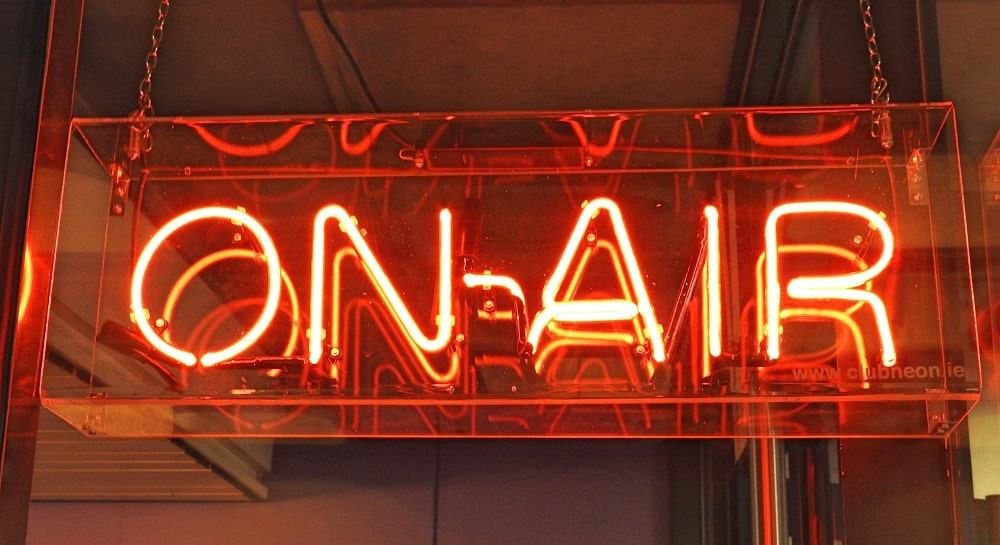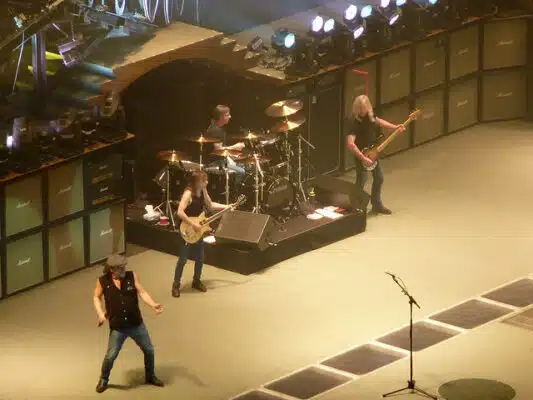Many memorable moments accompanied amazing AC/DC concerts throughout the years but, one show at Salt Lake City will forever be remembered as tragic. Yesterday marked thirty years since the tragic show in the US, when three teenagers tragically lost their lives.
To celebrate their then-latest album, The Razors Edge, AC/DC played over 150 shows for their 1990/91 World Tour. The success of the tour was fuelled by the crowd-pleasing songs, such as Thunderstruck, Moneytalks, Fire Your Guns, Are You Ready, and title track, The Razor’s Edge.
Disaster struck on January 18th, 1991, as the tour made its way through America. At a show in Salt Lake City, AC/DC had barely launched into their opening song, Thunderstruck, when a surging crowd ran towards the front of the stage.
AC/DC played their show at the Salt Palace Acord Arena, who booked the show as a general admission event, with no assigned seating. More than 13,000 people were in attendance that night, and the free-for-all for premium spots led crowds to surge to the front row. Things quickly escalated and fans were crushed against each other.
The band initially played on as the mayhem in the crowd was unfolding, although it is debatable as to how long they continued, with some saying 15 minutes, while others believe it to be around 45 minutes. Authorities, fearing a cancellation could result in rioting, recommended AC/DC finish their show following a 15 minute break.
Three teenagers died at the AC/DC gig, as a result of the stampede. 14 year-old Jimmy Boyd was pronounced dead on the night, of compression asphyxiation. 14 year-old Curtis Child died two days later at Holy Cross Hospital, and 19 year-old Elizabeth Glausi died in hospital four days later, when her life support equipment was shut off at her family’s request.
A Lieutenant Marty Vuyk of the Salt Lake City Police said at the time that the three teens apparently fell to the floor and “were then stepped on or crushed by the weight of other concertgoers” at the AC/DC show.
A day after the concert, security guard Scott Carter recalled to MTV that he “was telling the security guard for AC/DC to shut off the music, to turn off the lights, people are hurting, people are screaming. All I can remember is feeling helpless because I was being ignored. Nothing was being done.”
AC/DC were shook after the tragedy
“Terrible night. I’ll never forget it for as long as I live,” said Brian Johnson, as he recalled years afterward on Behind the Music. The frontman said he “was shattered” when the word finally reached AC/DC on stage. “Angus was beside himself. I could see he was welling up. Mal was trying to hold it together as best he could.”
“I think what hurt most was, the next day in the newspapers they were saying ‘band played on while kids died about them’ and they had a photograph of me with a smile on me face,” Johnson recalled. “It was just journalistic opportunity that went beyond the bounds of decency. I was so angry and hurt.”
Out of court settlements followed for AC/DC and Salt Lake County when parents of the victims sued for their involvement in the deaths. Survivors also sued for the injuries and trauma they sustained during the ordeal.
Many venues have either removed general admission shows or, adopted strict security guidelines to ensure fan safety. The tragedy of AC/DC’s show, accompanied by a similar disaster at a Who concert 13 years previous, helped raise these issues for improvements to be made.
AC/DC’s latest album PWR/UP skyrocketed up the album charts to take top spot in 18 countries.








